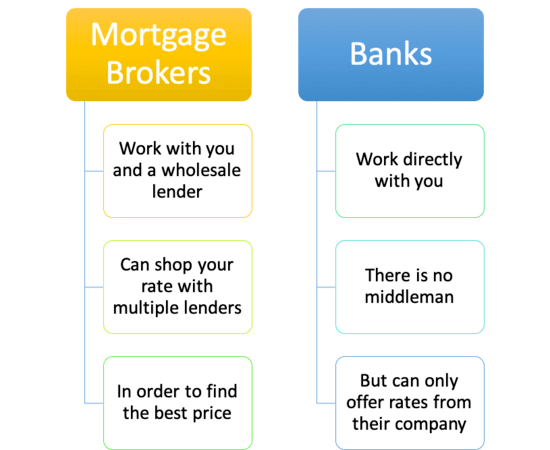Comprehending Jumbo Loan Requirements for Luxury Quality
Comprehending Jumbo Loan Requirements for Luxury Quality
Blog Article
Recognizing What a Jumbo Lending Entails and Exactly How It Varies From Standard Lendings
Navigating the intricacies of jumbo lendings discloses a financing option customized for those venturing right into high-value property, commonly exceeding the restrictions set by the Federal Real Estate Finance Firm. On the other hand, traditional lendings are typically more obtainable, taking advantage of backing by entities such as Fannie Mae and Freddie Mac. The substantial threat connected with big financings requires a lot more rigid certification demands, consisting of higher credit history and significant down repayments. As these 2 car loan kinds accommodate differing financial landscapes, comprehending their nuances is essential for making informed decisions in the complex world of real estate financing. But exactly how do you determine which path finest suits your economic strategy?
Interpretation of Jumbo Lendings
Jumbo lendings are a type of home loan that surpass the adjusting car loan limitations set by the Federal Real Estate Money Firm (FHFA) These lendings satisfy borrowers who need to fund properties that are much more costly than what standard lending limitations enable. The FHFA develops yearly adapting loan limits, and any type of finance going beyond these limits is identified as a big lending.
Usually, jumbo financings are made use of in high-cost property markets where home rates considerably go beyond nationwide standards, such as in urbane locations or deluxe real estate sectors. As these financings are not qualified for purchase by Fannie Mae or Freddie Mac, they lug inherent threats for lending institutions because of their larger dimension and non-conformity (jumbo loan). Lending institutions commonly impose a lot more strict certification requirements for jumbo financings than conventional adhering lendings.
Borrowers seeking big fundings must usually demonstrate a solid financial account, including a greater credit rating, robust income confirmation, and significant deposit, often 20% or even more. In addition, lending institutions might require a lot more extensive documents to assess the debtor's ability to handle bigger regular monthly settlements. Understanding the certain features of jumbo finances is crucial for prospective consumers navigating this sector of the home loan market.
Conventional Fundings Review
While big lendings deal with high-value property financing, conventional fundings stand for the even more usual mortgage option in the housing market. These car loans are not insured or ensured by any type of federal government entity, such as the Federal Real Estate Administration (FHA) or the Department of Veterans Affairs (VA) Rather, they are backed by personal loan providers and stick to standards established by government-sponsored ventures (GSEs) like Fannie Mae and Freddie Mac.
Standard lendings are generally provided with repaired or adjustable rate of interest and differ in terms of duration, commonly spanning 15 to 30 years. Borrowers often prefer standard fundings for their foreseeable regular monthly repayments, which can help with long-term economic preparation. Furthermore, they are available for primary houses, 2nd homes, and investment buildings, using versatility to meet varied debtor needs.

Key Differences In Between Lendings
At the forefront of this decision-making process are conventional finances and big finances, each possessing unique features and offering various consumer requirements. Big finances exceed the adapting finance limits set by the Federal Real Estate Financing Agency (FHFA), which differ by area.

In addition, the down payment demands can differ considerably. Big lendings typically need bigger down payments, in some cases surpassing 20%, to alleviate threat. Standard lendings, conversely, may enable lower deposits, with some programs accepting as low as 3% for qualified customers.
Credentials Needs
Safeguarding a big loan involves meeting more stringent credentials needs contrasted to standard lendings, showing the enhanced risk to lenders. These lendings, which exceed the conforming loan restrictions established by the Federal Housing Finance Agency (FHFA), are not qualified for acquisition by Freddie Mac or Fannie Mae, therefore revealing loan providers to greater financial threat - jumbo loan. Therefore, customers must show a high credit reliability and monetary stability
A durable credit report score, generally 700 or higher, is crucial for authorization. Lenders additionally anticipate a lower debt-to-income (DTI) proportion, commonly not exceeding 43%, making certain that debtors can handle substantial month-to-month repayments alongside various other financial commitments. Furthermore, a significant money reserve is normally required, frequently amounting to 6 months of home loan payments, to guarantee lenders of the debtor's financial durability.
Down settlement assumptions are additionally elevated, frequently starting at 20% or even more of the building's worth. While this is a protect for linked here loan providers, it demands substantial ahead of time resources from debtors.
Picking the Right Financing
When picking the most ideal financing alternative,Browsing the complexity of jumbo loans calls for mindful factor to consider. With the more comprehensive variety of options offered to those looking for big finances, the decision-making procedure ought to involve a thorough evaluation of one's monetary account and long-lasting goals. Unlike standard finances, jumbo lendings often feature stricter requirements and differed rate of interest, which necessitate detailed research study and a clear understanding of one's financial standing.
When picking between various jumbo lending offerings, it is vital to evaluate the finance terms, including rates of interest, repayment timetables, and connected costs. Debtors should compare the prices offered by various loan providers to guarantee they secure one of the most favorable terms. Furthermore, understanding the effects of repaired versus variable-rate mortgages (ARMs) is important, as each alternative presents unique advantages and risks depending upon market problems and personal monetary techniques.
Involving with an economic advisor or home loan broker can give valuable insights customized to specific circumstances. These experts can aid in browsing the nuances of jumbo fundings, making certain that borrowers are knowledgeable and outfitted to pick a funding that straightens with their financial objectives, ultimately helping with a smoother home-buying procedure.
Verdict
In recap, big loans act as an economic tool for obtaining high-value buildings, necessitating stringent eligibility requirements and higher interest rates due to the elevated risk for lenders. Unlike conventional loans, which satisfy FHFA limitations and may get backing from Fannie Mae or Freddie Mac, jumbo lendings need a minimum credit report of 700 and substantial down payments. Comprehending these distinctions is essential for borrowers in high-cost realty markets to establish one of the most appropriate funding choice for their needs.
The FHFA develops yearly adapting car loan limitations, and any lending going beyond these limits is categorized as a jumbo financing.
At the leading edge of this decision-making process are standard finances and jumbo finances, each having distinct features and serving various debtor needs.Safeguarding a jumbo financing includes meeting a lot more more helpful hints stringent credentials requirements contrasted to conventional loans, showing the increased danger to lenders. Unlike traditional lendings, big lendings commonly come with stricter demands and differed interest rates, which require thorough research study and a clear understanding of one's economic standing.
Unlike conventional finances, which conform to FHFA limitations and might obtain backing from Fannie Mae or Freddie Mac, jumbo financings require a minimum credit rating of 700 and considerable down settlements.
Report this page